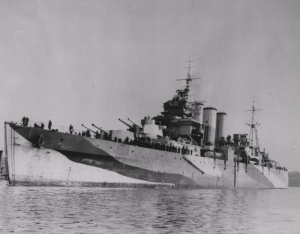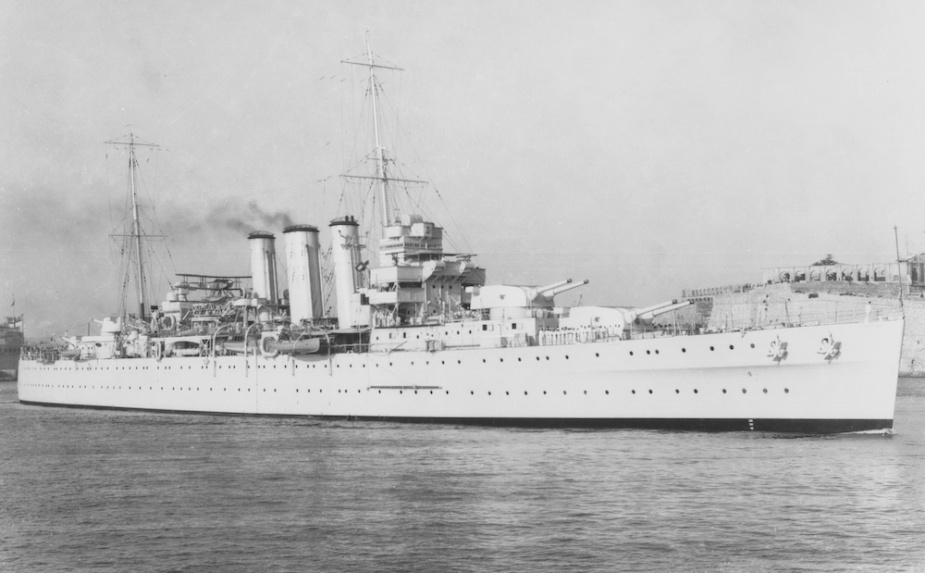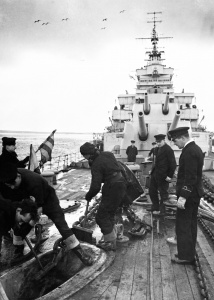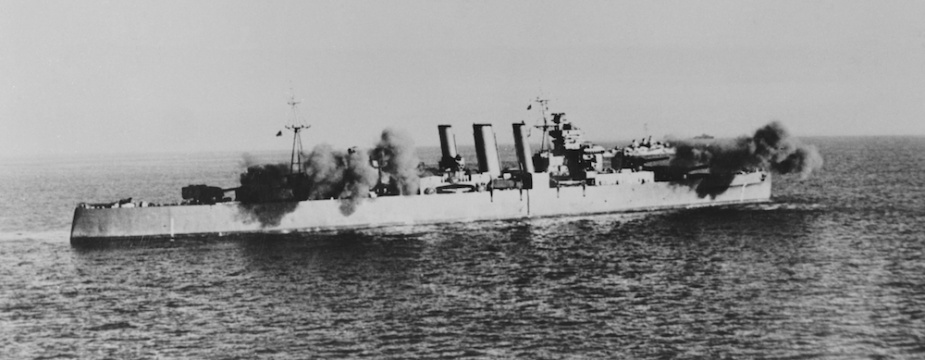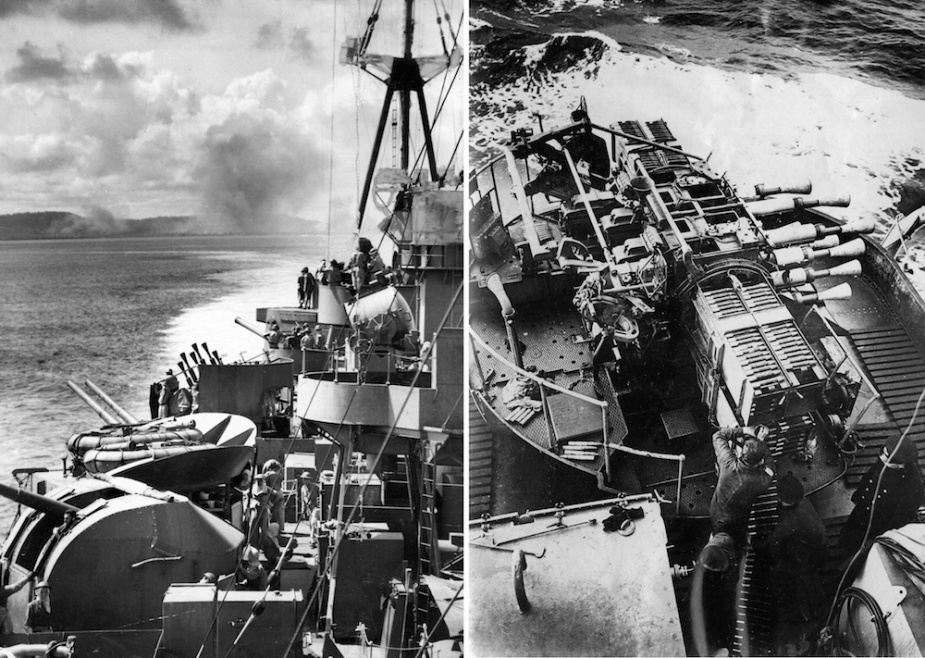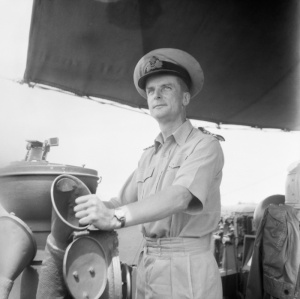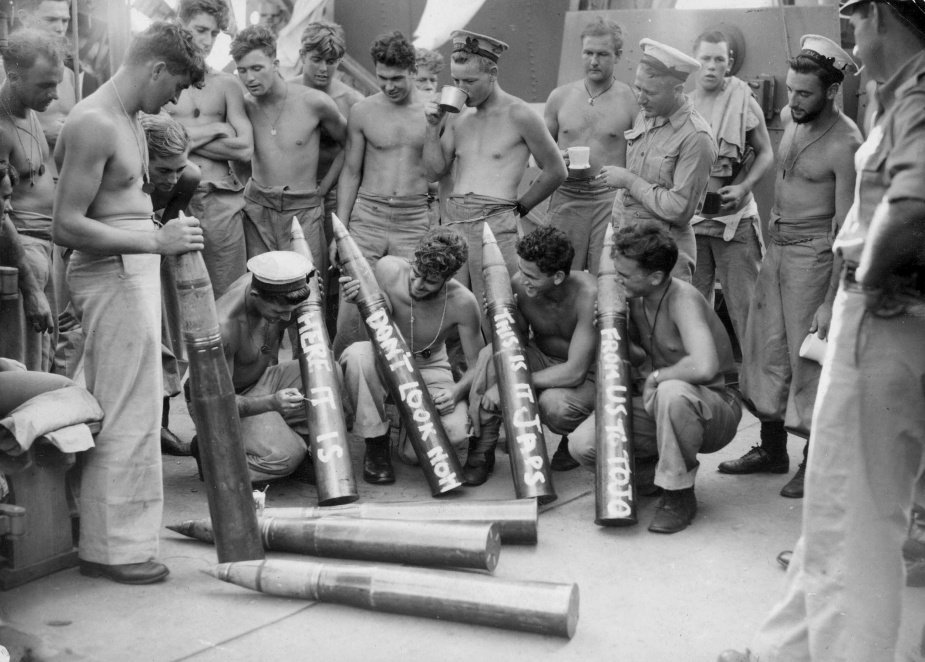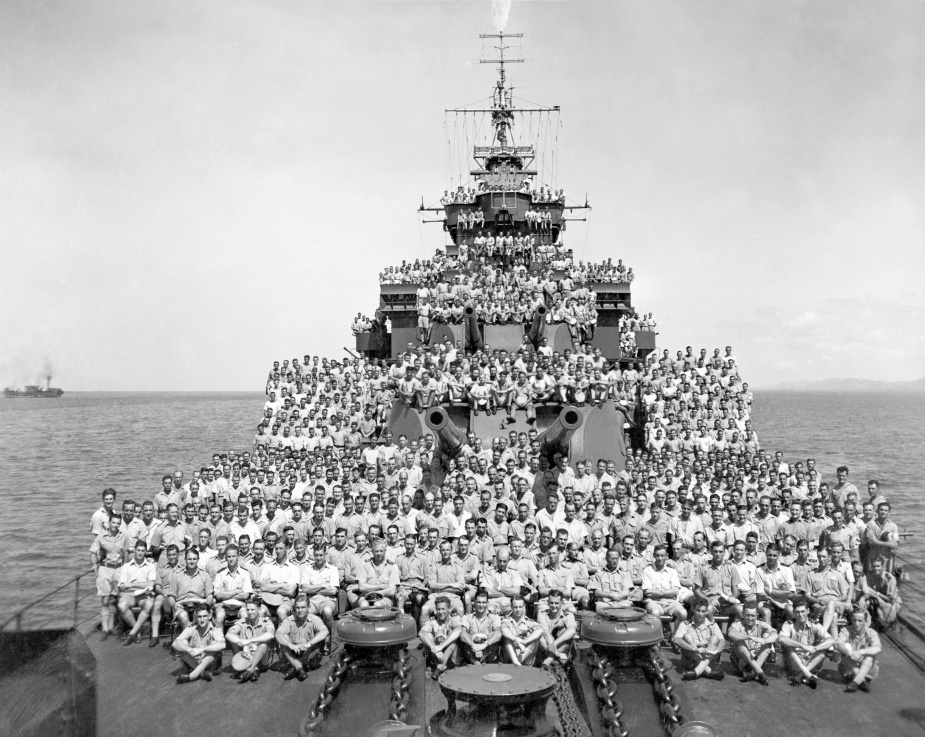HMAS Shropshire
| Class |
County Class |
|---|---|
| Type |
Heavy Cruiser |
| Pennant |
73 |
| Builder |
William Beardmore & Co Ltd, Dalmuir, Scotland |
| Laid Down |
24 February 1926 |
| Launched |
5 July 1928 |
| Launched by |
Countess of Powis, Baroness D'Arcy de Knayth |
| Commissioned |
20 April 1943 |
| Decommissioned |
10 November 1949 |
| Dimensions & Displacement | |
| Displacement | 9850 tons |
| Length | 633 feet |
| Beam | 66 feet |
| Draught | 17 feet |
| Performance | |
| Speed | 32.5 knots |
| Complement | |
| Crew |
|
| Propulsion | |
| Machinery | Parsons geared turbines, 4 screws |
| Horsepower | 80,000 |
| Armament | |
| Guns |
|
| Torpedoes | 8 x 21-inch torpedo tubes (2 quadruple mounts) |
| Awards | |
| Battle Honours | |
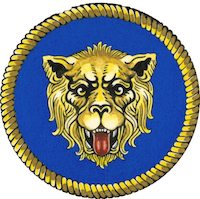
HMS Shropshire, the first ship of the name in the Royal Navy, commissioned on 24 September 1929 under the command of Captain RW Oldham OBE RN. She began her service career when she left England on 9 November 1929 to join the 1st Cruiser Squadron as a unit of the Mediterranean Fleet where she spent most of the following two years.
In April 1932 Shropshire returned to England, paid off at Chatham on 4 April and after recommissioning the following day, returned to the Mediterranean for her second tour of duty with the Mediterranean Fleet, arriving at Gibraltar on 29 April 1932. Two and a half years of uneventful routine Mediterranean service ended at Chatham on 28 November 1934 when she again paid off. By Christmas 1934 Shropshire was again back in the Mediterranean to begin her third period with the 1st Cruiser Squadron.
Shropshire remained in the Mediterranean throughout the Abyssinian War (1935-36) and Spanish Civil War, playing a leading part in the evacuation of refugees from Barcelona (22 August to 16 September 1936). The cruiser remained with the 1st Cruiser Squadron until 1937 when she returned to England for a refit lasting four months.
On 10 November 1937 Shropshire again commissioned for Mediterranean service. On 19 September 1938 she became the flagship of Rear Admiral JDH Cunningham CB MVO RN, and wore his flag until 25 May 1939.
On the outbreak of war in September 1939 Shropshire was ordered to take up patrol in the South Atlantic and for the next four months she was almost continuously at sea on trade protection duties. During the period of October to December 1939 she steamed some 34,000 miles and was under way more than 1800 hours. Atlantic patrols ended early in 1940, and Shropshire returned to England for refit before proceeding for service in the Indian Ocean, where she was employed on patrol and escort duties between Capetown, Durban, Mombasa and Aden.
In 1941 the cruiser operated against Italian Somaliland, bombarding Mogadishu and Kismaya during the advance of the South African Army from Kenya to Abyssinia. With HM Ships Hawkins, Hermes and Kandahar, Shropshire played a leading part in the campaign which ended with the collapse of the whole of the Italian Empire.
In June 1941 Shropshire withdrew from the Indian Ocean and returned to England for refit which was not completed until March 1942. She then returned to the Atlantic for a second period of patrol and escort duty.
Following the loss of the heavy cruiser HMAS Canberra (I) on 9 August 1942 in the Battle of Savo Island, the British Government approved the transfer of Shropshire to the Royal Australian Navy as a replacement. The transfer was announced in the House of Commons on 8 September 1942 by the Prime Minister, Mr Winston Churchill. Mr Churchill said:
His Majesty's Government consider that the Commonwealth should not bear this grievous loss following the sinking of other gallant Australian ships. We have therefore decided to offer, freely and unconditionally, to transfer His Majesty's 8-inch gun cruiser Shropshire to the Commonwealth Government, this offer has been most warmly received.
The decision to transfer Shropshire to the Royal Australian Navy brought her recall from service on the South Atlantic Station. Captain JT Borrett OBE RN relinquished his command at Chatham on 23 December 1942, and five days later Commander David H Harries RAN assumed command to supervise refit and transfer to the Royal Australian Navy. At this stage in her history Shropshire had steamed some 363,000 miles of which 220,000 had been on war service. During the refit the ship's aircraft and catapult were landed. She did not carry an aircraft during her Australian service.
Captain John A Collins CB RAN assumed command on 7 April 1943 and she commissioned as HMAS Shropshire at Chatham on 20 April 1943. However, the pre-transfer refit occupied many months and it was not until 25 June 1943 that Shropshire was formally handed over to the Royal Australian Navy by Admiral Sir George d'Oyly Lyon KCB, Commander-in-Chief, The Nore.
In August 1943 Shropshire began her voyage to Australia escorting a Gibraltar bound convoy. She arrived at Capetown on 4 September, Fremantle three weeks later and finally Sydney on 2 October 1943. On 30 October at Brisbane the cruiser joined the Australian Squadron (Task Force 74) under the command of Rear Admiral Victor AC Crutchley VC RN, flying his flag in HMAS Australia (II).
In December 1943 Shropshire took part in the New Britain operations covering the landings at Arawe and Cape Gloucester. In March 1944, with other ships of Task Force 74, she took part in the operations leading to the seizure of the Admiralty Islands and the following month was again in action at the Hollandia/Humboldt Bay operations.

